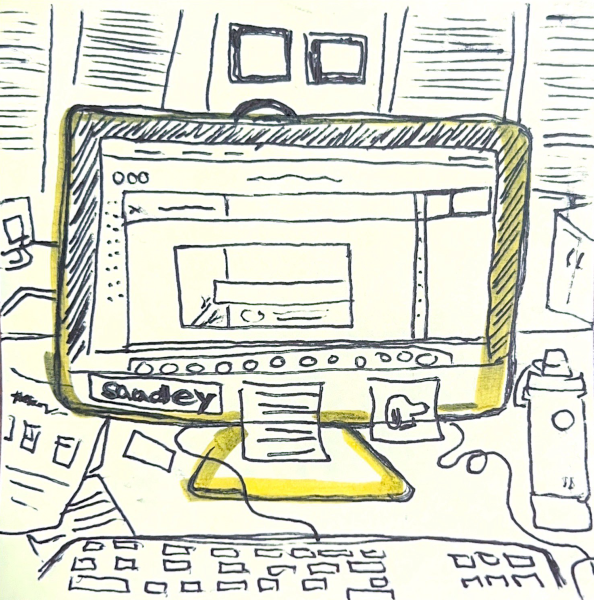Design Innovation Initiative moves forward in development of personal protective equipment for frontline workers
July 3, 2020
Kent State’s Design Innovation Initiative continues to break ground in their development and distribution of personal protective equipment [PPE] to local health care workers during the COVID-19 pandemic.
What began as a team of 25 people inspired to supplement the shortage of PPE available to frontline workers has grown into a team of over 81 individuals, which, according to a statement released by the university, is comprised of people from “eight colleges, three campuses … as well as 44 student/alumni volunteers and four community members/agencies.”
A team this large, spanning a variety of industries and disciplines, was necessary to achieve a product that was effective while also providing access to supplies, information and technology that would not have been available otherwise, said J.R. Campbell, executive director of the Design Innovation Initiative.
“It became clear right away that we needed to bring in nurses and public health experts and designers and people who had access to the technology,” Campbell said. “It naturally needed us to figure out how to connect across the university in a way that doesn’t normally happen.”
Supported by grants from the Burton D. Morgan Foundation and United Way of Portage County, and additional funding and materials provided by MedWish, the Design Innovation team began developing prototypes for a protective face shield in early March.
“We spent some time really analyzing and tweaking and evolving,” Campbell said. “We wanted them to be flexible and adjustable, and robust, to keep the print time low so we can produce more.”
They decided on a design with a 3-D printed frame that wraps around the forehead and behind the ears, similar to glasses. The protective plastic covering is attached to the front, with adjustable elastic bands attached to the back.
After receiving feedback from Akron nurses who wore the masks throughout their shift, the team revised the design before moving to printing and assembling. Student and faculty volunteers were sent designs, along with printing filament and packaging equipment, and began printing the shield frames from home, Campbell said.
The shields were then sent to MedWish, which distributed 2,675 of the 3,000 shields to medical centers across Northeast Ohio, surpassing the initial goal of 2,000 donations.
The majority of the shields were delivered to Case Western Reserve University’s Geriatric Dentistry Mobile Unit, Bhutanese Response Assistance Volunteer Effort (BRAVE), Sewa International and others, while the remaining 325 masks were reserved for staff at the Deweese Health Center.
“Our point was to have something as quick as we could that would be available in our community, that was really the goal,” Campbell said. “It’s a pretty huge population, even if we just focus on that portion of Northeast Ohio.”
Campbell advised individuals interested in the protective shields or other PPE to reach out to local health agencies or city offices who will then reach out to MedWish on their behalf.
Following the success of the face shields, the team began developing ideas for a face mask that functioned near the same performance level of the N95 mask and could be used alongside the shield.
“A shield is not a protective device on its own,” Campbell said. “It’s meant to be paired with some form of face covering or otherwise. That’s kind of where we’re at right now.”
The face mask proved to be more difficult to prototype, Campbell said, since it required a design that would provide a snug, comfortable fit on a variety of face shapes. Multiple designs were created to determine which would be the most universal, while still being effective.
“If any mask doesn’t conform to the face,” he said, “well then essentially you’re kind of missing the point because then you’re still having lots of potential for particles to go in and out.”
Currently, the masks are in the research stage of development, as work is being done to ensure the materials provided to the Design Innovation team by MedWish are capable of protecting individuals from COVID-19, Campbell said.
“We’re focused on trying to think about how we could learn more about the actual materials, medical wrap textiles, and to think about whether or not those will perform well,” he said. “So that testing is more laboratory testing, where we’re sending out the samples of the fabric to see how it meets the testing standards.”
While Campbell understands the significance of the accomplishments made by the Design Innovation Initiative, he said the market for masks, shields and other PPE are growing, so he is unsure if there will be a need for the production of additional shields or masks moving forward.
“As long as there isn’t something that causes a major outbreak and supplies become diminished again, we probably won’t need to produce anymore from our point of view,” he said. “But at least we know we can.”
Contact Zaria Johnson at [email protected]




















